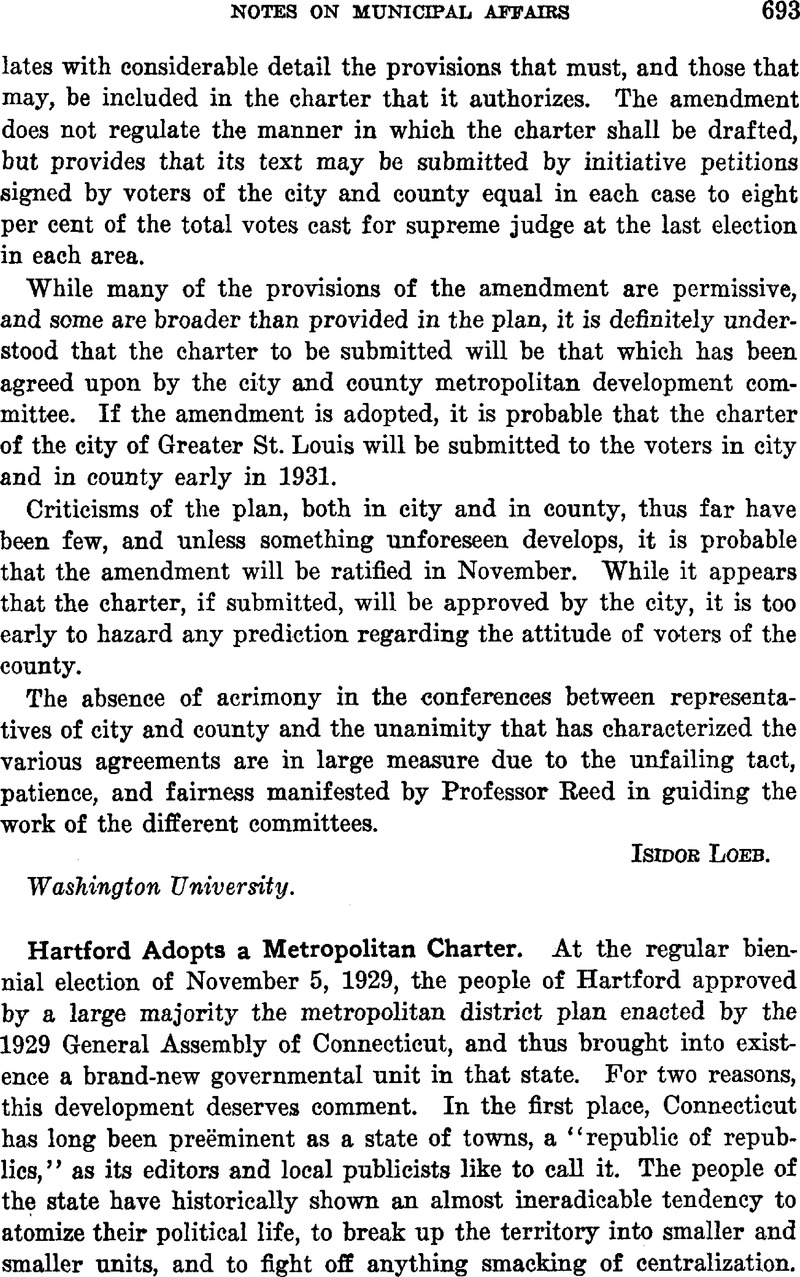No CrossRef data available.
Article contents
Hartford Adopts a Metropolitan Charter
Published online by Cambridge University Press: 01 August 2014
Abstract

- Type
- Notes on Municipal Affairs
- Information
- Copyright
- Copyright © American Political Science Association 1930
References
1 Special Act No. 346, 1927.
2 The East Hartford representatives withdrew from the commission, and that town took no part in the formation of the district.
3 Special Act No. 511, 1929.
4 This town, next to Hartford itself, is the largest and wealthiest of any in the proposed district, being a choice residential suburb of the metropolis. The residents of the town seem to have feared that the proposed plan would lead to eventual annexation, and had a not unnatural desire to prevent their affairs from falling into the hands of Hartford politicians.
5 Section 29.
6 Section 28.
7 The so-called state tax on towns is laid as follows: the General Assembly determines upon the amount to be raised for state purposes. (It is now $1,250,000, ch. 294, Public Acts, 1929.) The average of the taxes laid locally for the past three years is then computed. Each town then pays to the state a tax equal to the proportion which local revenues bear to the collections of all the towns in the state. Section 224, Gen. Stat. Rev. of 1918. The counties raise their revenue in the same way.
8 Serial bonds only are permitted in the political sub-divisions of the state.
9 Special Act No. 472, 1929.





Comments
No Comments have been published for this article.